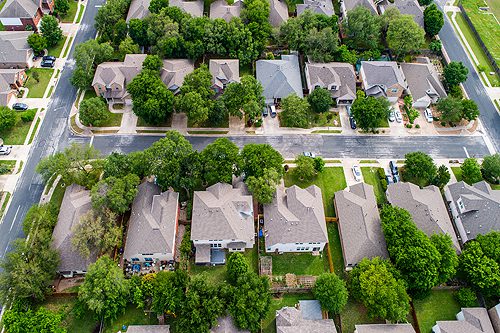The Residential Builder’s Guide to What Makes a Great Master Planned Community
Master planned communities are becoming increasingly popular with homeowners who value things like a sense of community and thoughtful neighborhood design.
Developing a successful master planned community and building the types of homes that people want to buy isn’t exactly easy, however. If you’re a builder interested in building homes in these types of communities, it’s a good idea to learn more about the best practices for master planned communities.
With that in mind, let’s take a look at some of the most successful communities in the U.S., as analyzed by the pros over at John Burns Real Estate Consulting (JBREC).
The key features of desirable master planned communities
As the JBREC article we linked to above explains, “… most developers have worked hard to create the perfect combination of attractive amenities, proper product segmentation and creative, targeted marketing.”
Those are the foundational ingredients for success. JBREC also identified four specific pieces of criteria in the nation’s most successful communities:
1. Diversity in the type of housing offered
To attract the greatest number of potential buyers, communities should feature a range of home sizes and types, all at different price points. The most successful communities also tend to use a variety of builders. Very large and extremely well-segmented communities are the rare exception.
For an example of this in action, look at the Denver, Colorado community of Stapleton, which ranks at the top of JBREC’s list of best master planned communities. You’ll find multi-level townhomes with roof decks, paired homes and single-family homes. As one consultant explains, “Stapleton is proving that you can create great lifestyle with product at price points for everyone.”
2. Consistent themes throughout the master planned community
Residents appreciate a sense of cohesiveness, which can be accomplished through elements that support a consistent theme. Signage, landscapes, lighting, street names, mailboxes and similar details make a big difference.
An example to emulate is Daybreak in Salt Lake City, Utah: “Daybreak is one of the best communities at integrating the modern farmhouse theme into its homes, which really
reinforces the health and wellness themes.”
3. Lifestyle amenities and activities
Shared or reciprocal amenities and activities that speak to a variety of lifestyles are an important part of most master planned communities. For example, communities that market to families with children should offer things like parks, playgrounds and community events.
The Las Vegas, Nevada community Inspirada does a great job of this: “Inspirada proves that amenities that families want in a great location are a recipe for success. Four really cool parks and community events like farmers’ markets and yoga classes that promote health and wellness, which is what today’s buyer is looking for.”
4. Branding and marketing that showcases a unique identity
All master planned communities also need to focus on their branding and marketing. For an example of great branding, look to Lake Nona in Orlando, Florida. Within the community, “Innovation, health and technology have been successfully branded throughout all areas, and Lake Nona is known for its wide-ranging medical industries.”
As a builder, you likely won’t be personally responsible for creating the brand and marketing plan. You do want to build with the brand in mind, however, and doing so will attract the right type of residents who will love living in the community.
Learn how you can protect your business and add valuable selling points to your new builds with 2-10 Structural Warranties.







